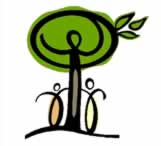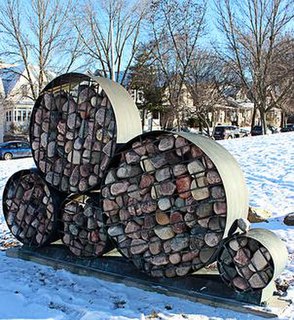
Milwaukee is the largest city in the state of Wisconsin and the fifth-largest city in the Midwestern United States. The seat of Milwaukee County, the city is located on Lake Michigan's southwestern shore and was incorporated in 1846. As of the U.S. Census Bureau's July 1, 2019 estimate, Milwaukee had a population of 590,157, making it the 31st largest city in the United States and the fourth-largest city situated along one of the Great Lakes. It is the main cultural and economic center of the Milwaukee metropolitan area, the fourth-most densely populated metropolitan area in the Midwest. Milwaukee is considered a "Gamma −" global city as categorized by the Globalization and World Cities Research Network with a regional GDP of over $107 billion.

Mequon is the largest city in Ozaukee County, in the U.S. state of Wisconsin, and the third-largest city in Wisconsin by land area. Located on Lake Michigan's western shore with significant commercial developments along Interstate 43, the community is a suburb in the Milwaukee metropolitan area. Despite being an incorporated city, approximately half of Mequon's land is undeveloped and agriculture plays a significant role in the local economy. At the time of the 2010 census the population was 23,132.

An arboretum in a general sense is a botanical collection composed exclusively of trees. More commonly a modern arboretum is a botanical garden containing living collections of woody plants and is intended at least in part for scientific study.

An oak savanna is a type of savanna-or lightly forested grassland- where oaks are the dominant trees, the term oakery or woodlands is also used commonly, though the former is more prevalent when referencing the Mediterranean area. These savannas were maintained historically through wildfires set by lightning, humans, grazing, low precipitation, and/or poor soil.

The Milwaukee River is a river in the state of Wisconsin. It is about 104 miles (167 km) long. Once a locus of industry, the river is now the center of a housing boom. New condos now crowd the downtown and harbor districts of Milwaukee attracting young professionals to the area. The river is also ribboned with parks as it winds through various neighborhoods. Kayaks and fishing boats share the river with party boats. An extensive Riverwalk featuring art displays, boat launches and restaurants lines its banks in downtown Milwaukee.

The National Wildlife Federation (NWF) is the United States' largest private, nonprofit conservation education and advocacy organization, with over six million members and supporters, and 51 state and territorial affiliated organizations.

Forest Park is a park in the New York City borough of Queens, spanning 538 acres (218 ha). It is the tenth-largest park in New York City and the third-largest in Queens. Created on August 9, 1895, it was originally referred to as Brooklyn Forest Park, as the area was part of Brooklyn at the time.

The Kinnickinnic River is one of three primary rivers that flows into the harbor of Milwaukee, Wisconsin, at Lake Michigan, along with the Menomonee River and Milwaukee River. It is locally called the "KK River".

The Menomonee Valley or Menomonee River Valley is a U-shaped land formation along the southern bend of the Menomonee River in Milwaukee, Wisconsin. Because of its easy access to Lake Michigan and other waterways, the neighborhood has historically been home to the city's stockyards, rendering plants, shipping, and other heavy industry. It was also a primary source of pollution for the river.

East Side is a neighborhood of Milwaukee, Wisconsin, considered to be a cultural and trend-setting center of the city since at least the 1960s. Encompassing an area just north of the Historic Third Ward neighborhood to the village of Shorewood, bordered by the Milwaukee River to the west and Lake Michigan to the east, the area encompasses residences, bars, shops, art theaters, live music clubs and the University of Wisconsin–Milwaukee campus.

Kettle Moraine Lutheran High School (KMLHS) is a four-year Lutheran high school in the Town of Jackson, Wisconsin, located approximately 20 miles northwest of Milwaukee. The school is affiliated with the Wisconsin Evangelical Lutheran Synod (WELS).

Black Bayou Lake National Wildlife Refuge is one of five refuges managed in the North Louisiana Refuge Complex and one of 545 refuges in the National Wildlife Refuge System. It was established in 1997 through a unique partnership with the city of Monroe, Louisiana. The U.S. Fish and Wildlife Service has a free 99-year lease to manage the city-owned lake.
Most parks in Milwaukee are owned and maintained by Milwaukee County as part of a county-wide system. However, some parks are administered by other entities, such as the state of Wisconsin, the city of Milwaukee, or neighborhood organizations.

The Martin Drive neighborhood of Milwaukee is a residential district on the west side of the city. It is named for the local 19th-century politician Morgan Lewis Martin. Housing development started in the 1920s around two breweries. The area has benefited from local improvement programs and community activities since the 1990s.

Washington Parks and People is an alliance of community urban park partnerships based at the Josephine Butler Parks Center in the Columbia Heights neighborhood in Northwest Washington, DC. The organization's field headquarters, the Riverside Center, is located in a former nightclub in Northeast Washington, DC, next to the center of Marvin Gaye Park. Washington Parks & People and its community partners manage environmental reclamation, tree planting, and park programming by community volunteers and trainees.

Solar power in Wisconsin on rooftops is estimated to be able to provide 40.1% of the electricity used in Wisconsin, using 23,600 MW of solar panels. Net metering is available for systems up to at least 20 kW, and excess generation is credited at retail rate to customers next bill. Some utilities allow net metering up to 100 kW. For Xcel customers, kilowatt credits are rolled over monthly and are reconciled annually at avoided cost. Best practices recommend no limits, either individually or aggregate, and perpetual roll over of kilowatt credits.

Walk Like a River is a public sculpture by Peter Flanary located at Riverside Park on the east side of Milwaukee, Wisconsin. Walk Like a River consists of three sculptures--Drop,Gather, and Flow--installed throughout the park. The group of sculptures was commissioned by the Urban Ecology Center, a nonprofit organization.

Connect is a public art work by artist Jeremy Wolf. It is installed in Riverside Park on the east side of Milwaukee, Wisconsin.

















